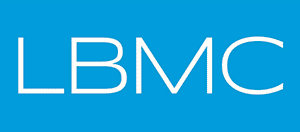Anyone who has children in daycare so that they can go to work knows the pain associated with the high costs of daycare or childcare services. Fees can easily reach $1,000 per month, and if a family has two or more children in daycare, the sky is the limit.
What is a Dependent Care Reimbursement Plan?
A Dependent Care Reimbursement Plan can help ease the pain and provide a little tax relief. This type of account falls under a Cafeteria Plan, which allows tax-free participation. When an employer offers a Dependent Care Reimbursement Plan, the IRS allows employees with dependent children under the age of 13 or adult dependents who cannot care for themselves to enroll in the plan and elect up to $5,000 per year to be deducted from their payroll and placed in the Dependent Care Reimbursement Plan. The amount elected is divided evenly among the number of pay periods per year. This amount is deducted each pay period on a pre-tax basis, meaning that federal, Social Security, and Medicare taxes are not calculated or deducted. In other words, the employee keeps the full dollar for each dollar deducted. As childcare expenses are incurred, a tax-free reimbursement is made to the participating employee.
What Are the Benefits and Criteria of a Dependent Care Reimbursement Plan?
The outcome of participating in a Dependent Care Reimbursement Plan is the elimination of taxes paid on money earned and used for childcare expenses. Taxes saved can exceed $1,100 or more when the full $5,000 is elected. The net result is that $5,000 in childcare expenses costs only $3,900. The plan is also flexible, as far as who can be the childcare provider. Of course, state-licensed childcare facilities qualify as a provider, but nannies, sitters, au pairs, grandparents, and other relatives also qualify. Note the other dependents, such as an older sibling, do not qualify. Additionally, preschool, before- and after-school programs, summer day camps, and sport camps are also permitted providers.
A Dependent Care Reimbursement Plan is governed by the IRS under Section 129 of the Internal Revenue Code, which means that there are a few rules to follow. The spouses of married employees must be gainfully employed or in school. Employees participating in the plan cannot take the childcare credit allowed when completing a 1040 tax return. Also, there are special rules for divorced parents that clarify which parent can participate in the plan. Participants must also provide proof that the childcare services were performed by a qualifying childcare provider, such as a receipt, statement, or invoice and provide the federal tax identification number of the facility or social security number of the individual provider.
Tips for Maximizing the Benefits of a Dependent Care Reimbursement Plan:
- Plan Carefully: Take the time to estimate your annual dependent care expenses accurately. Since you’ll be electing a specific amount to be deducted from your paycheck pre-tax, it’s important to choose a realistic amount that aligns with your anticipated childcare costs.
- Know the Deadlines: Most employers have open enrollment periods during which you can sign up for a Dependent Care Reimbursement Plan or make changes to your existing enrollment. Be aware of these deadlines and make your selections accordingly.
- Keep Records: To ensure smooth reimbursements and to meet IRS requirements, maintain detailed records of your childcare expenses. This includes receipts, invoices, and any necessary documentation from the childcare provider.
- Understand Qualifying Expenses: While a wide range of childcare providers are eligible, not all expenses may qualify. Make sure you’re aware of what types of services are covered under the plan. For instance, overnight camp expenses might not be eligible.
- Consider Flexible Spending Accounts (FSAs): Some employers offer dependent care FSAs, which work similarly to reimbursement plans but might have some differences in terms of contribution limits and usage. Compare the benefits of both options to determine which is more suitable for your needs.
- Coordinate with Childcare Tax Credits: Depending on your situation, you might also be eligible for the Child and Dependent Care Tax Credit. Understand how enrolling in a Dependent Care Reimbursement Plan might impact your eligibility for this credit and calculate which option provides greater financial advantage.
- Review Changes in Family Circumstances: If there are changes in your family circumstances, such as a new child, change in marital status, or job change, reassess your dependent care needs and adjust your plan accordingly during the allowed periods.
- Educate Yourself: Familiarize yourself with the specific terms and conditions of your employer’s plan. Be aware of any administrative fees, rules for rollovers, and any unique provisions that might apply.
- Communicate with Your Employer: If you have any questions or uncertainties about your Dependent Care Reimbursement Plan, don’t hesitate to reach out to your employer’s HR department or benefits administrator. They can provide guidance and clarification on plan details.
- Future Financial Planning: As you’re saving on taxes through this plan, consider diverting the extra funds into a savings or investment account. This can help you build a financial cushion or contribute to long-term goals.
Remember that tax laws and regulations can change, so staying informed about updates from the IRS and any modifications to your employer’s plan is essential for making the most of your Dependent Care Reimbursement Plan.
Want to learn more?
An employer offering a Dependent Care Reimbursement Plan is offering their employees the opportunity to keep more of their hard-earned money. Employees participating in the plan will enjoy a significant tax savings. Our team at LBMC Employment Partners is equipped and ready to help employers and employees fully understand all the criteria and benefits involved with a Dependent Care Reimbursement Plan. Connect with us to inquire further.
Enjoying the Read?
